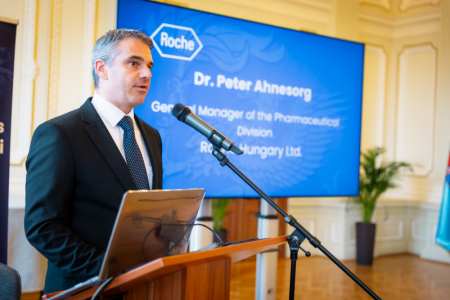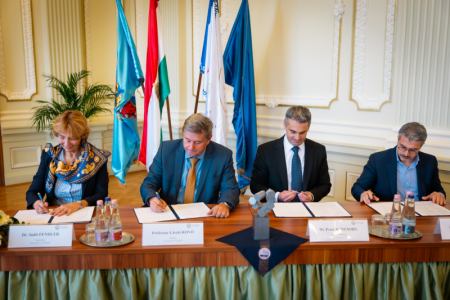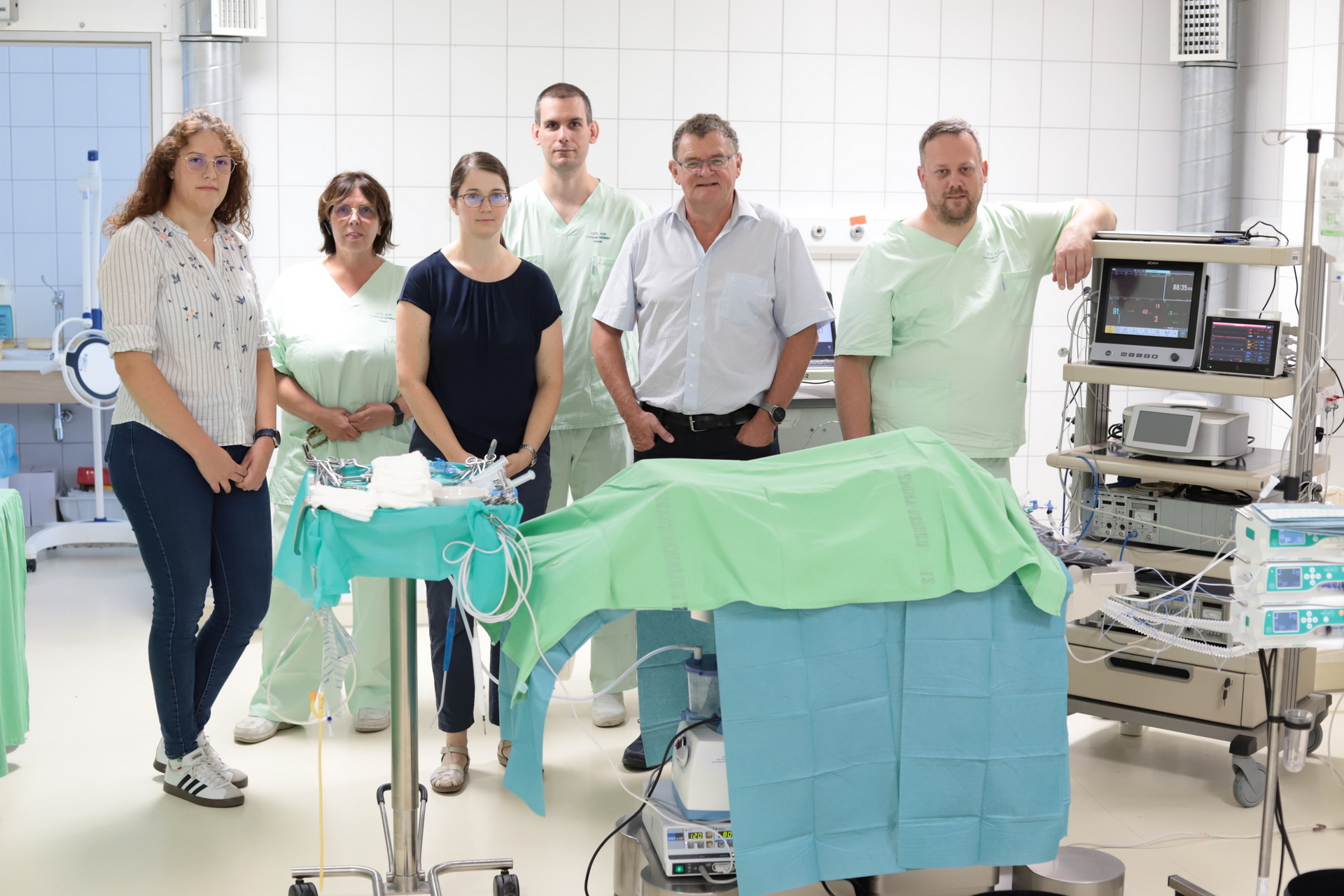University of Szeged
Albert Szent-Györgyi Medical School
Foreign Students' Secretariat
Your Education. Our Mission.

Medicine of the future demonstrated in Szeged – innovation and technology at the service of health care
The University of Szeged (SZTE) presented its latest research results and medical technology developments at an all-day professional and press event.
The program focused on collaborations between the university and its industrial partners, as well as the latest advances in diagnostics and therapy. As part of the official program of SZTE Innovation Day, a new cooperation agreement between the University of Szeged and Roche Hungary was ceremoniously signed. This was followed by a special thematic tour for the press, during which several departments of the Albert Szent-Györgyi Clinical Center (SZTE SZAKK) presented their latest technological developments.
Zoltán Szepes, professor at the Department of Internal Medicine, stated that the institution's endoscopic laboratory is considered the best in Hungary and is also the country's only Olympus Training Center. The laboratory, which caters for 12-13,000 patients annually, is much more than a diagnostic unit; it is capable of performing all procedures that the best Western European institutions are. Among other things, it can perform examinations of the bile ducts and break up stones found there or in the pancreatic duct.
The Szeged laboratory performs the most colon screenings in the country, as well as the highest number of endoscopic ultrasound examinations. A major advance in education and continuing medical education is that images taken during procedures can be recorded and transmitted in real time. Artificial intelligence is also used in the analysis of the examinations, with one application drawing attention to any polyps found in the intestine and the other one helping to identify lesions.

Zsuzsanna Besenyi, head of the Department of Nuclear Medicine revealed that the university's theranostic center is unique in the country because the diagnosis of certain cancers, the planning and implementation of the required therapy, and follow-up are all carried out within a single unit. During patient care, radioisotope preparations specifically linked to the given tumor type are used, one of which helps to visualize the lesions in imaging procedures, while the other can be used in therapy. The expert said that SZTE is currently the only place in the country that treats patients with certain types of brain tumors, prostate cancer, and neuroendocrine tumors. A cyclotron is currently being installed at the university and a related radiopharmaceutical manufacturing plant is being set up, so SZTE will soon be producing its own radiological preparations.
Endre Varga, professor at the Department of Traumatology affirmed that the department performs about 900 knee replacement surgeries annually. The unit has been at the forefront of surgical planning and the introduction of surgical navigation for about 20 years, and since May, the CORI robotic surgery system has also been assisting in patient care. The artificial intelligence-supported robot assists in knee replacement surgeries with tenth-of-a-millimeter precision, making the procedure faster, safer, and much gentler on patients. The unique feature of the technology developed by Smith+Nephew is that the surgeon controls every moment of the operation, while the robot analyzes the movements in real time and shows how each intervention affects the balance, axis alignment, or range of motion, all without three-dimensional imaging, using real-time 3D mapping of the knee.

At the Department of Oto-Rhino-Laryngology and Head and Neck Surgery Clinic, high-precision surgical procedures are also performed using state-of-the-art surgical microscopes and endoscopes. The imaging techniques used during surgery—with low radiation exposure—allow the surgeon to monitor the key step of cochlear implantation, i.e. the insertion of the electrode into the cochlea, during the procedure. Two modern nerve monitors are also used in the operating room. These devices continuously monitor the functioning of important nerves during the procedure, such as the facial nerve that controls the facial muscles and the vagus nerve that controls the vocal cords. This is particularly important during ear, thyroid and trachea as well as cochlear implant surgeries, as it allows the surgeon to receive immediate feedback when approaching the nerve.





